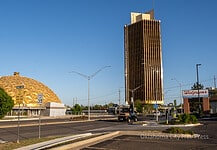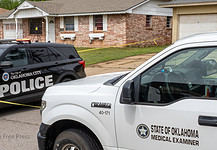Last Updated on February 1, 2022, 4:12 PM | Published: February 1, 2022
OKLAHOMA CITY (Free Press) — A new day has dawned in Oklahoma City, and it is welcomed by the gentle clucking of urban hens.
On Tuesday, the City Council of Oklahoma City approved the raising of hens and quail in Oklahoma City limits.
The Council went on to approve an allocation of American Recovery Plan Act (ARPA) funds for a slate of projects and to approve the collective bargaining agreement with the Fraternal Order of Police.
Urban fowl
Tuesday’s meeting of the City Council was the culmination of the three-meeting process to create a new ordinance for the City and seven years of debate. The ordinance in question this time provides for the non-commercial raising of only six chicken hens and quail. No roosters are allowed.
The ordinance was co-authored by Bradley Carter (Ward 1), JoBeth Hamon* (Ward 6), and Nikki Nice (Ward 7). After the public hearing, Ward 2 Councilman James Cooper added his name as a sponsor as well.
In previous meetings, the Council heard from members of the public about the ordinance, mostly in support. There were two members of the public, including one high-ranking member of City staff who took time off to address the Council as a resident, who spoke in opposition of the ordinance.
At Tuesday’s meeting, no members of the public had signed up to speak, and none of the authors had additional comments to make, so Carter moved the item for approval.
At that time, Ward 4 Councilman Todd Stone spoke up and asked to amend the ordinance.
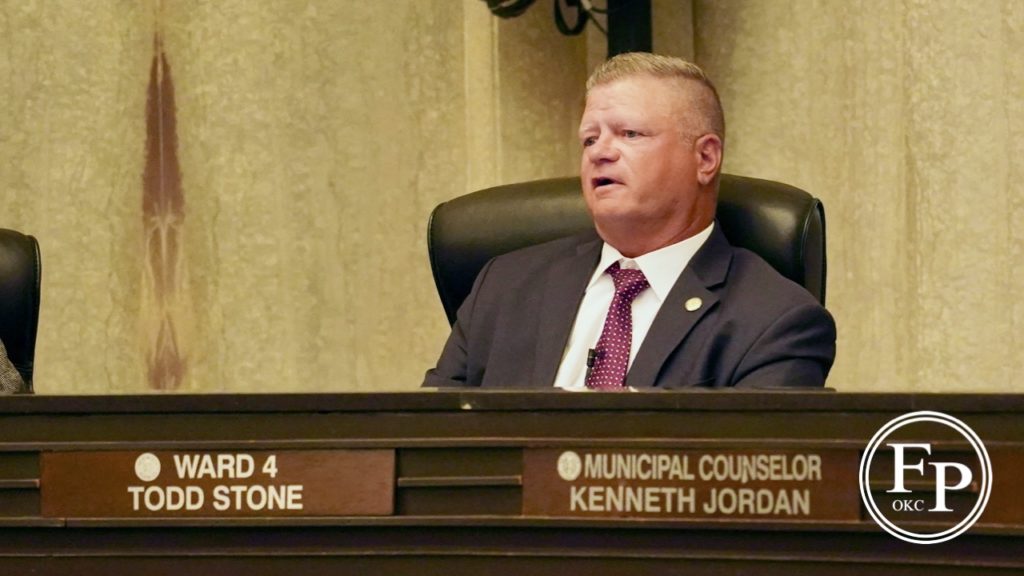
The ordinance, as proposed, includes a clause requiring coops to be at least 30 feet from any adjacent dwellings.
Stone said that after talking with constituents and other council members, he was concerned about that distance. Stone said that he used to raise hens and that they might be too noisy to be within 30 feet of a neighbor’s house.
In the six weeks since the ordinance was proposed, including two open sessions for discussion, the concern had never been raised by Stone or anybody else on the horseshoe. In fact, Stone had not offered his input as a former hen owner during open session.
Stone said he preferred 75 feet. Carter and Nice at first countered that there would probably be some compromise to reach.
Hamon then objected and pointed out that there was ample time to have this conversation over the past many weeks, and that it wasn’t particularly fair to make an amendment at this late date that would specifically restrict a lot of food insecure people from having hens. Even the decision to limit the distance to 30 feet will exempt some people from having access to a sustainable food source.

As for noise, Hamon pointed out, she lives with the noise of loud trucks, motorcycles, car and train horns, dogs barking, and other sounds that wake her up in the night and early morning. That is part of living around other people, she explained.
Nice then took up the issue of not having brought this up sooner. She said she was frustrated and disappointed that this simple conversation couldn’t have been had among the Council in a timely fashion, instead of after a motion had been made for a final vote. She reiterated that it was disappointing that if Stone had experience raising hens, he had never contributed to the conversation.
Stone said he talked to a lot of people, and Nice asked if he spoke to Council members. Stone said yes.
Nice then pointed out that Stone hadn’t talked to at least two of the three authors.
At that point, the conversion became acrimonious, with Stone saying he didn’t realize he needed to “check with” Nice. Nice pointed out that it is a courtesy to talk to the author.
The two went on, speaking over each other, while the Mayor tried sheepishly to interrupt and regain order.

Eventually, Ward 8 Councilman Mark Stonecipher said he would be willing to make a motion for an amendment and “just see what happens from there.”
However, procedurally, that was not possible because a motion was on the table already. Mayor Holt looked to Carter who, as the one who had made the motion, had the only power on the horseshoe to continue his motion or withdraw.
Carter, for his part, said he appreciated Stone’s concern, but had only learned of it shortly before Tuesday’s meeting, and he tended to agree with Hamon’s arguments. His motion stood.
The Council then voted to approve of the ordinance, with Stone, Ward 5’s David Greenwell, and Ward 3’s Barbara Young being the opposing votes.
The ordinance will go into effect on March 4.
ARPA allocation
Assistant City Manager Aubrey McDermid addressed the Council on Tuesday to describe a requested allocation of $78,507,590 under the use category of “Revenue Replacement.” That category covers “restoring government projects, infrastructure, and services.”
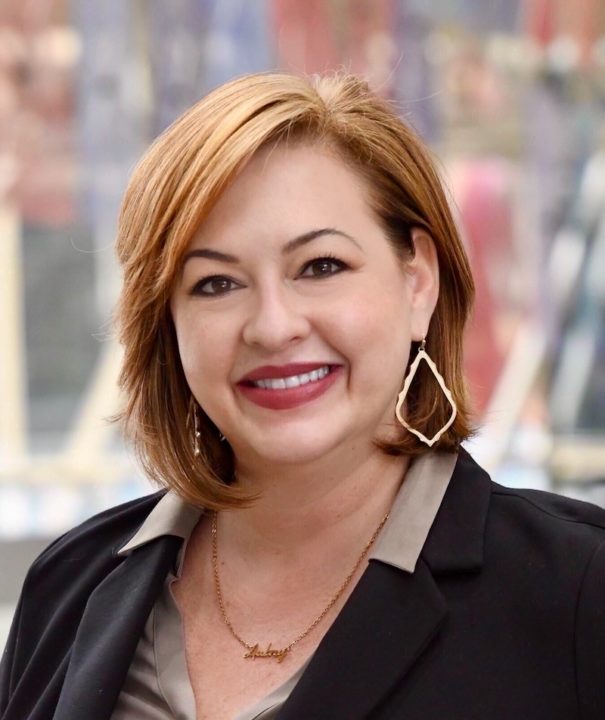
The projects listed are not fully fleshed out, according to the City, but the allocation needed to be made now in order to get moving on practical planning aspects of each project. McDermid reminded the Council that there is a deadline for ARPA allocation and spending.
McDermid and City Manager Craig Freeman reassured the Council that this would not be the last time these projects were before the Council, as they would have to approve contracts leading up to the projects actually beginning.
The main projects presented, though without individual details, fall under four categories:
- Critical Infrastructure (Includes bridges)
- Public Safety & Cybersecurity (includes $6 million of additional funding for the Public Safety Training Center)
- Transportation Infrastructure (sidewalks, bike lanes and trails)
- Parks/Recreation & Neighborhoods (invests in two parks and a Strong Neighborhood Initiative)
McDermid compared the ARPA opportunities with the CARES funds from last year.
“CARES helped us feed apples to hungry people. ARPA allows us to plant orchards to feed people for years.”
The allocation was approved unanimously as part of the meeting’s consent agenda.
FOP contract
In a vote that has become routine, the Council retroactively approved the latest collective bargaining agreement with the Fraternal Order of Police, Lodge No. 123, a union representing the sworn employees of the Oklahoma City Police Department.
The agreement makes mostly standard changes in the favor of the police, pay schedules and title changes among them. The agreement also uses non-gendered language for the first time, as well as giving the Police Department the holiday of Juneteenth as a paid holiday for all staff.
Before voting, Ward 2 Councilman James Cooper said that while he believes in the dignity of work, and wants to support working people, this agreement moves the city no closer to the goals that many have been working toward over the past two years. Cooper said he could not support this contract.
Cooper was joined in voting no by only Hamon of Ward 6. The contract was approved.
Increased bus ridership
During comments from Council, Cooper had the opportunity to share some exciting and remarkable news about public transportation in Oklahoma City.
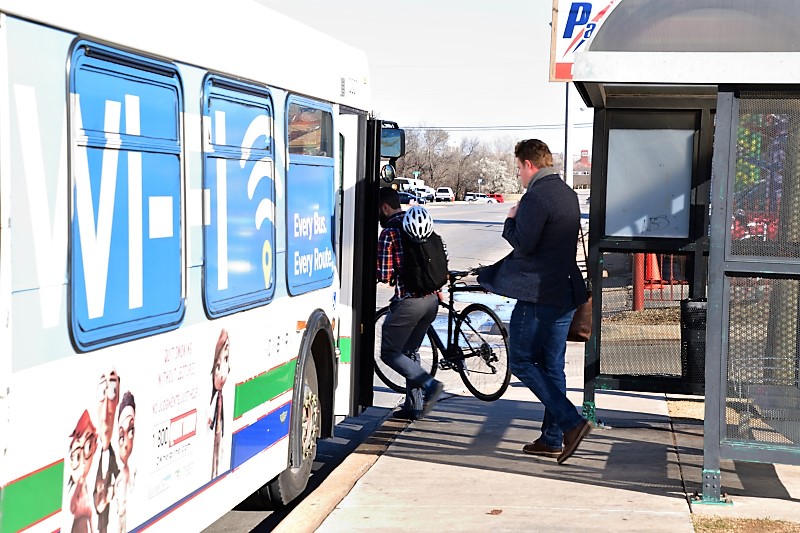
EMBARK, the operator of the buses and streetcar in Oklahoma City, recently expanded service on the Route 018 bus.
Route 018 travels from downtown to Lincoln and north past the Capitol all the way to Britton. The recent expansion of service increased bus frequency from one hour between trips, to a more customary half-hour frequency.
Ridership on 018 has increased by 59% since the added frequency.
Cooper pointed this out as an example of the popular phrase, “If you build it, they will come.”
In the coming decade, Cooper said, this City Council has the opportunity to invest in making our public transportation far more robust. Cooper’s goal of effective public transit includes buses on a fifteen-minute frequency.
City Council will meet again on February 15 at 8:30 a.m.
*Disclosure: Reporter Marty Peercy is the husband of Oklahoma City Council member JoBeth Hamon.
Columnist covering local government in Oklahoma City and Oklahoma County from May 2019 through June 2023.





